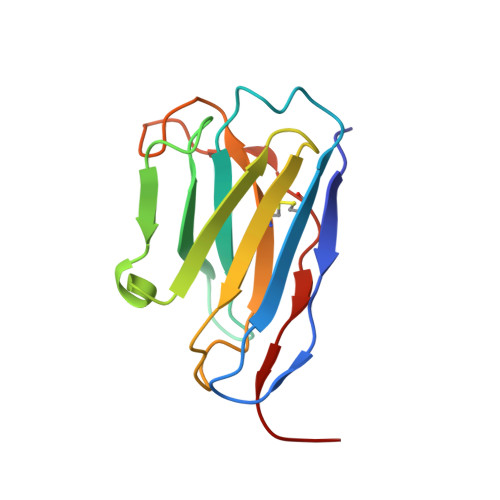Structures of Omicron spike complexes and implications for neutralizing antibody development.
Guo, H., Gao, Y., Li, T., Li, T., Lu, Y., Zheng, L., Liu, Y., Yang, T., Luo, F., Song, S., Wang, W., Yang, X., Nguyen, H.C., Zhang, H., Huang, A., Jin, A., Yang, H., Rao, Z., Ji, X.(2022) Cell Rep 39: 110770-110770
- PubMed: 35477022
- DOI: https://doi.org/10.1016/j.celrep.2022.110770
- Primary Citation of Related Structures:
7WS0, 7WS1, 7WS2, 7WS3, 7WS4, 7WS5, 7WS6, 7WS7, 7WS8, 7WS9, 7WSA - PubMed Abstract:
The emergence of the SARS-CoV-2 Omicron variant is dominant in many countries worldwide. The high number of spike mutations is responsible for the broad immune evasion from existing vaccines and antibody drugs. To understand this, we first present the cryo-electron microscopy structure of ACE2-bound SARS-CoV-2 Omicron spike. Comparison to previous spike antibody structures explains how Omicron escapes these therapeutics. Secondly, we report structures of Omicron, Delta, and wild-type spikes bound to a patient-derived Fab antibody fragment (510A5), which provides direct evidence where antibody binding is greatly attenuated by the Omicron mutations, freeing spike to bind ACE2. Together with biochemical binding and 510A5 neutralization assays, our work establishes principles of binding required for neutralization and clearly illustrates how the mutations lead to antibody evasion yet retain strong ACE2 interactions. Structural information on spike with both bound and unbound antibodies collectively elucidates potential strategies for generation of therapeutic antibodies.
Organizational Affiliation:
The State Key Laboratory of Pharmaceutical Biotechnology, School of Life Sciences, Institute of Viruses and Infectious Diseases, Chemistry and Biomedicine Innovation Center (ChemBIC), Institute of Artificial Intelligence Biomedicine, Nanjing University, Nanjing, China; Shanghai Institute for Advanced Immunochemical Studies and School of Life Science and Technology, ShanghaiTech University, Shanghai, China.
















